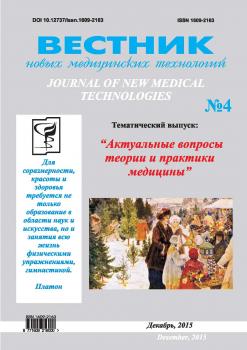The paper is devoted to the experiment, the purpose of which is to learn how random angular misalignments of the hands of a doctor during the odontoceridae affect on the quality of the side surface of the resulting stump. The experiment is considering two cases: first – odontoceridae by the method without the use of special means of preventing accidental angular deviations of the hands of the doctor, the second – odontoceridae using devices of control and correction of angular deviations of dental tool. The experiment was conducted on phantom models of the lower jaw contains a set of teeth frasaco. At the end of the experiment, to analyze the quality of the resulting surfaces, two phantom models were placed in the optical scanner and received two 3D scan. Comparison of angular deviations of the walls teeth relative to the reference pin was carried out. The quality of the surface of the lateral walls of the prepared teeth was shown the color field to the side wall of the stubs. Minimum angular deviation segment of the wall was marked with the same color as the wall of the reference pin. With increasing convergence of a segment of the wall color it becomes different from the color of the pin. Mechanical stabilization of the hands of doctors improves the quality of the surface of the side wall of the stump.
odontoceridae, angular misalignments of dental instrument.
Для прочной и уверенной фиксации несъёмных ортопедических конструкций требуется предъявлять особые требования к форме и поверхности культи обработанного зуба. Среди этих требований можно выделить одну из основных – параллельность боковых стенок препарированного зуба. Параллельные стенки культи обеспечивают наиболее надёжную посадку ортопедической конструкции. Выполнив это условие на практике можно рассчитывать на то, что ортопедическая конструкция без затруднений будет установлена в полость рта и прослужит пациенту долгое время [1-3,5,6].
Однако в реальных условиях врачу не удаётся сформировать культю, удовлетворяющую заданному требованию. Проводя операцию одонтопрепарирования, врач не может длительное время удержать выбранную ось препарирования и многократно отклоняется от этой оси. Прикасаясь к обрабатываемой поверхности режущим инструментом под разными углами, врач формирует сложную изломанную боковую поверхность культи. В литературе встречается множество различных рекомендаций для врачей о том, какой угол кон-вергенции является оптимальным при одонтопрепарировании, и его значения колеблются от 3° до 10° [4,6].
В практике же встречаются случаи, когда угол конвергенции стенок культи доходит до 29º [6].
1. Arutyunov S.D. Matematicheskoe modelirovanie i raschet napryazhenno deformirovannogo sostoyaniya metallokeramicheskikh zubnykh protezov. Stomatologiya. 1997. №4. S. 47-51.
2. Arutyunov S.D. Profilaktika oslozhneniy pri primenenii metallokeramicheskikh zubnykh protezov: avtoref.dis. kand. med. nauk. M., 1990. 63 s.
3. Kitsul I.S. Sistema otsenki kachestva raboty vra-cha-stomatologa-ortopeda i izgotovleniya zubnykh protezov: Metodicheskie rekomendatsii. Irkutsk: Irkutskoe med. izd-vo, 2001. 32 s.
4. Lemann K., Khel´vig E. Osnovy terapevticheskoy i ortopedicheskoy stomatologii. L´vov: GalDent, 1999. 298 s.
5. Chuyko A.N., Shinchukovskiy I.A. Biomekhannika v stomatologii. Khar´kov: iz-vo «Fort», 2010. 466 s.
6. Shillinburg G., Yakobi R., Brakett S. Osnovy preparirovaniya zubov dlya izgotovleniya litykh metallicheskikh, metallokeramicheskikh i keramicheskikh restavratsiy. M.: Azbuka, 2006. 365 s.





